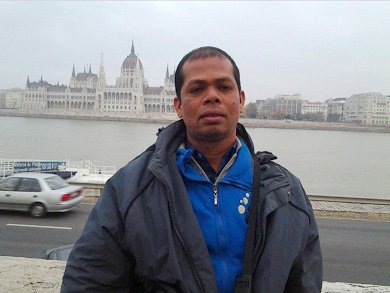Compiling the Physical Test Instruments for Adult Tarung Derajat Martial Arts
Abstract
This study aims to (1) produce a physical test instrument for combat martial arts in the adult fighting category (2) produce a manual for a physical test instrument in the adult fighting category. (3) Knowing the feasibility of the product manual for the physical test instrument for combat martial arts degrees in the adult fighting category.This research is a type of research (R&D) using a 4D development model. This development model consists of four stages, namely: (define, design, develop, disseminate). This research was conducted at PB Kodrat Yogyakarta which involved two validators, 1 material expert and 1 physical condition expert, 3 practitioners and 2 colleagues and 10 combat trainer respondents. Data collection techniques using questionnaires, methodsdelphi, and scoring rubrics. Validity testuse content validity analyzed using aikens v formula and concurrent validity analyzed using correlation product moments. Reliability test usingApha Cronbach. This study resulted in a manual product for the physical test of combat martial arts in the adult fighting category, which consisted of 12 test items, namely: (1) side splits, (2) 20 meter sprint, (3) hexagonal obstacle, (4) standing broad jump, (5) shock test (6) Expand Dynamometer (7) leg dynamometer (8) back leg dynamometer (9) push ups 1 minute, (10) sit ups 1 minute, (11) wall squat test, (12) run 2.4 km. The physical test instrument for fighting grade martial arts is declared valid with r count > from r table with details; 0.94 > 0.632 and the test was declared reliable with Cronbach's alpha value of 0.945 > 0.765. The product of the Tarung Degree physical test instrument has a feasibility percentage of 100% with a very strong/decent/ appropriate category from a material expert and 100% very strong/appropriate/feasible from a physiotherapist. The trainer's response to the manual has a percentage of 96% including in the very very strong / appropriate / appropriate category.
Keywords
Full Text:
PDFReferences
Bahar, et al. (2020). Teacher’s Use of Power Bases as Perceived by ELT Students in Tertiary Education. Budapest International Research and Critics Institute-Journal (BIRCI-Journal). P. 1426-1434
Bafirman, B., & Wahyuri, AS (2019). Formation of Physical Conditions.Yogyakarta
Demorest, RA, & Koutures, C. (2016). Youth participation and injury risk in martial arts. Pediatrics, 138(6). https://doi.org/10.1542/peds.2016-3022
Drajat (2017). Degree combat training guide. The mighty art of mortal ghada, mortal mental teacher hajj achmad degree. Yogyakarta
Fenanlampir, A., & Faruq, MM (2015). test and measurement in sport. Yogyakarta: cv andi offset
Hariadi, I., Fadhli, NR, & Taufik, T. (2019). Training on Preparation of Test Instruments & Measurement of Physical Conditions for Trainers Koni district Poor. Journal Karinov, 2(2), 103-106.
lacy, A. C., & Williams, S. M. (2018). Measurement And Evaluation In Physical Education And Exercise Science. Routledge
Motor Ablity To Assistant Coach DojoIndonesian Karate-Do Institute Koto Tangah District. Journal of Community Service Work, 1(1), 67-74.
Noviatmoko F. (2016). Component analysis dominant physical condition in degree fighting sport. Journal of Sports Health Vol. 06 NO. 2 October 2016 Edition pp. 441 – 449
Roberts, S., Boddy, L., Fairclough, S., & Stratton, G. (2012). The influence of relative age effects on the cardiorespiratory fitness levels of children age 9 to 10 and 11 to 12 years of age. Pediatric Exercise Science, 24, 72-83. Picked March 30, 2020. Sepdanius, E., Rifki, MS, & Komaini, A. (2019). Exercise Tests and Measurements.
Setiawan, I., Akbar, M., & Allsabah, H. (2018). Profile of the Level of Physical Condition of Athletes in Kediri Dalam City Preparing for the Year Porprov Championship 2018 . Kediri (2018). 1 , 2 1,2. 3(November), 475–484. Doi Http://Dx.Doi.Org/10.28926/Briliant.V3i3. 251
Setyo Budianto (2012). Exercise methodology sport. Yogyakarta.
Sugiyono. (2015). Research methods and development. Bandung: Alphabeta.
Supriyoko, A., & Mahardika, W. (2018). Condition Surakarta City Fencing Athlete Physique. SPORTIVE Journal: Research Journal Learning, 4(2), 280-292.
Law Number 3 of the Republic of Indonesia Year 2005 and Government Regulation of the Republic of Indonesia Year 2007 concerning the National Sports System.
Utami, D. (2015). The Role of Physiology in Improving Indonesia's Sports Achievement Towards the Sea Games. Jorpres (Journal of Sports achievements), 11(2).DOI: https://doi.org/ 10.21 831/jorpres.v11i2.5728
DOI: https://doi.org/10.33258/birci.v4i4.3101
Article Metrics
Abstract view : 59 timesPDF - 31 times
Refbacks
- There are currently no refbacks.

This work is licensed under a Creative Commons Attribution-ShareAlike 4.0 International License.

This work is licensed under a Creative Commons Attribution-ShareAlike 4.0 International License.

_.gif)

















_.gif)



